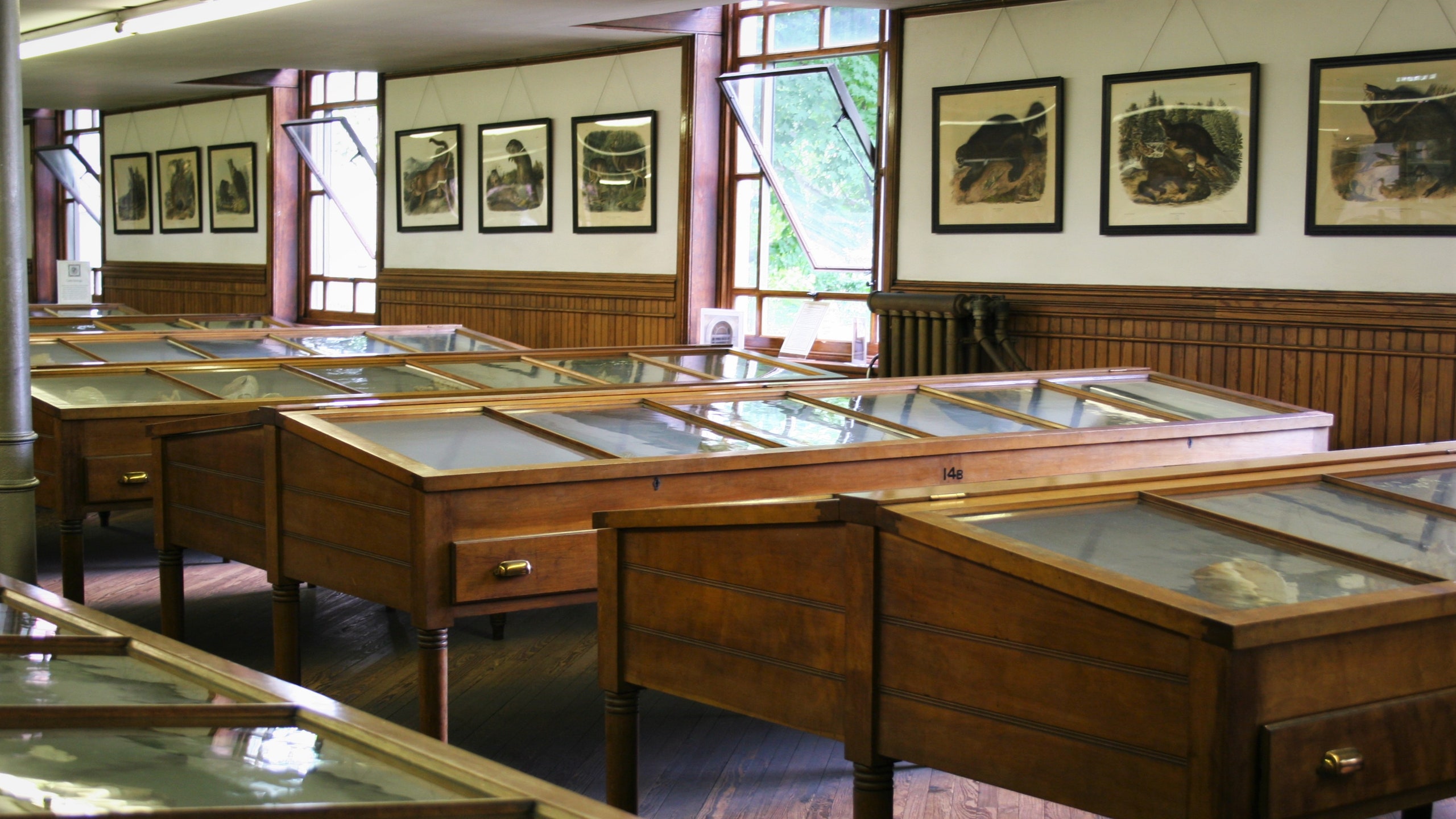As perfectly preserved as an ammonite, the Wagner Free Institute of Science in Philadelphia was always something of a cultural and architectural anomaly. Created during the height of the Victorian mania for natural history – generally regarded as the ‘golden age of amateur naturalists’, when women tucked fossil hammers into their skirts for some light archaeology on their morning walks and men with an inkling of evolutionary theory pinned beetles to boards – the splendid institute was built to house the collection of the ‘gentleman scientist’ William Wagner. His aim was to allow anyone interested in science to access the trove of curiosities he’d picked up on his travels – and what marvels they were.
Wagner began his career employed by banker and philanthropist Stephen Girard, supervising the latter’s shipping cargo on voyages to ports around the world. He evidently learnt quickly on the job – a July 1876 issue of the Philadelphia Times claimed that he’d been ‘chased by pirates in the straits of the East India Islands’, ‘narrowly escaped shipwreck on the precipitous shores of the Red Sea’, ‘bartered with Arabs for gold dust, with Turks for rags, with Spaniards for olives’ and ‘traded on the wharves of the East India dock for port, wine, and gin’ – and he soon set out on his own as an independent merchant. This career proved his making, and he returned to America with a fortune, as well as a rekindled childhood passion for collecting fossils, plants, shells and other naturalia.
On his honeymoon in the early 1840s, Wagner and his second wife, Louisa Binney (herself a keen naturalist who’d keep pressed leaves inside her botany books), took a two-year tour of Europe, visiting various natural history museums, including the British Museum in London, the Jardins des Plantes in Paris and the Museum für Naturkunde in Berlin – though Wagner was dismayed to discover that he often required a letter of introduction to access certain collections. On his return, he began giving free lectures at Elm Grove, his suburban home in Philadelphia. Public interest, however, quickly exceeded the limits of his living room. A local hall served in the interim, but he soon resolved to build a museum that could house his considerable collection of natural specimens, one which would double as an egalitarian institute of science open at no cost to both men and women of any race or class.
For this ambitious project, he commissioned the architect John McArthur Jr, designer of the imposing Tenth Presbyterian Church, with its 250-foot-tall tower and spire, and who would go on to author the Second Empire-style Philadelphia City Hall, which held the record as the tallest habitable stone-and-mortar building in the world at the time. Wagner’s vision for his own museum was humbler, though no less inspired. Ultimately built in the Classical Revival style, the institute included an amphitheatre modelled on the lecture hall at the Smithsonian Institute and a vaulted, three-tiered gallery with an exposed truss that housed his many thousands of specimens in custom cherry wood-and-glass vitrines.
Work on the building began in 1860, and the Wagner Free Institute of Science opened in 1865 ‘with the object of providing gratuitous instruction in the Natural Sciences [...] to all persons’. Wagner led the institution and continued to give lectures until his death in 1885. That year, renovations were carried out by the architects Edward Collins and Charles M. Autenrieth, and in 1901 a library wing was added by GW and WD Hewitt to house the institute’s vast collection of monographs, museum records, manuscripts, maps, prints, photographs, drawings and lantern slides dating back to the late 17th century. Meanwhile, the internationally celebrated biologist Dr Joseph Leidy was appointed to head the institute in Wagner’s stead. Over the following years, the founder’s original collection greatly expanded through new acquisitions, including the first American sabre-toothed tiger (discovered on a museum-sponsored expedition to Florida in 1886), and Leidy led a massive restructuring of the institute’s treasures into a display organised by reference to geological time.
The exhibition hall’s innovative new arrangement proved popular, and little was altered at the Wagner after this major change. As a result, it exists today as a ‘museum of a museum’, continuing to serve the public as a free institute open to all, at once an ongoing resource for scientific research and the oldest intact example of a Victorian museum in the United States.
Despite the relative abundance of amateur practitioners, Wagner’s vision for the total democratisation of scientific study was still unusual for his time. One wonders what might have been lost – not only in terms of the physical scientific specimens, but also in the knowledge gained by the public – had he not narrowly escaped pirates or shipwreck, or indeed if he had studied medicine, as he had once wished, rather than embarking on a mercantile career. In Dr Leidy’s inaugural lecture at the institute after Wagner’s death, he described his predecessor as ‘an ardent student of nature, and the vast knowledge which he acquired from a lifetime of study he longed to impart to his fellow man’. Like all scientific theories worth their salt, more than a century and a half later, this still holds true.

